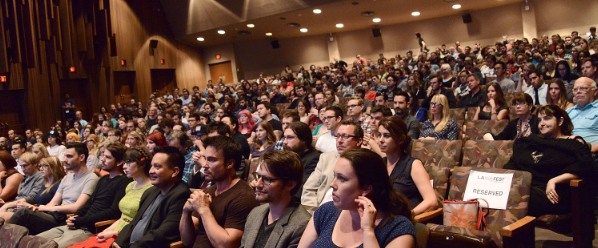Yes, more platforms means more opportunity for getting your film seen, but it also means more confusion. One syllable sums up producer Jennifer Dubin’s advice for filmmakers facing the big distribution dilemma: plan. “You need a strategy,” says Dubin, who along with producer Cora Olson will be teaching a two-day “Demystifying DIYstribution” class on Saturday, June 28 and Sunday, June 29, as part of our Producer’s Toolkit film education series designed to help filmmakers better understand the business side of the independent film landscape. (For more information and to buy tickets, go to the events page on filmindependent.org.) “It’s never too soon to start thinking about your audience,” says Dubin, adding that a successful strategy starts with figuring out what your film is and customizing that strategy based on understanding who is the audience for that film. “Filmmakers need to take a good look at what their project really is and what are the marketable elements of that film.” By considering a variety of factors, (such as release windows and core audience), she says filmmakers can create a marketing campaign and ways to target their core audience customized for their particular project. One big misconception caused by the “DIY” acronym is what the “Y” word actually means. “Yourself” doesn’t imply that you alone need to shoulder every responsibility associated with the distribution of your film. “Like making a film, distribution is about collaboration and finding the right partners and bringing the team together,” says Dubin. You may need a publicist, a theatrical booker, a VOD partner or all of the above, but the priority, she says, should be picking and choosing that team based on the specific needs of the project. Another misconception, says Dubin, is that there is only one right way to do distribution. “That isn’t true either. People release in 100 different ways. There are an endless number of ways you can do things.” Louis C.K. is a perfect example of how a content creator who grows and maintains a fan base can capitalize on that relationship to retain control of your project’s fate. A recent Variety article “Comedians Skipping Traditional Distribution to go Straight to Fans” explained that “Louis C.K. blazed a trail for self-distribution of comedy specials in 2011 with Louis C.K.: Live at the Beacon Theater, which he sold straight to fans as a $5 direct download via LouisCK.net.” That $5 product generated $1million in sales. Dubin says you don’t have to be as wildly popular as Louis C.K. to apply the same direct-to-consumer principle. “It’s about knowing who your audience is and creating relationships that travel with you from project to project. “I want filmmakers to think of DIY distribution as a way to empower yourself, taking charge of what happens to your movie,” says Dubin. “Even if you work with a distributor, the more knowledge you have and the better informed you are, the more you will be able to steer the release the way you want it, and be satisfied with the result. People have the attitude ‘I don’t want to distribute my movie, I just want to make my movie,’ but you need to make sure that people know the last film you made. You need to make sure you’re reaching an audience. Nobody’s going to care more than you do.” Pamela Miller / Website & Grants Manager
